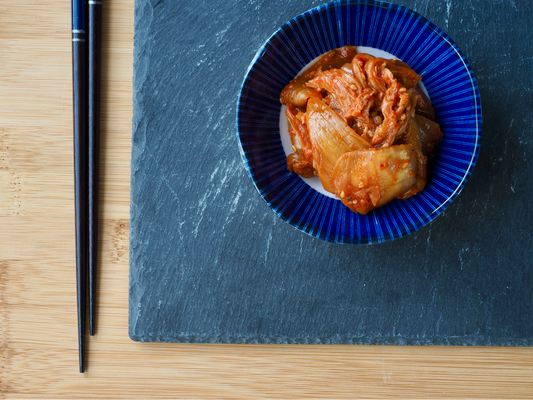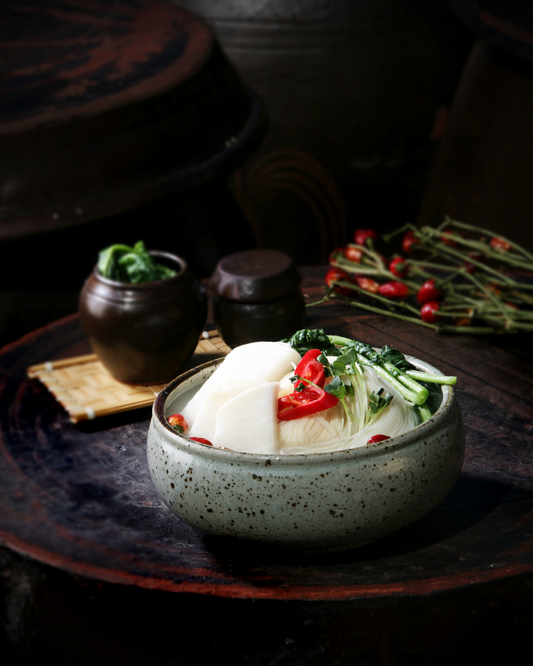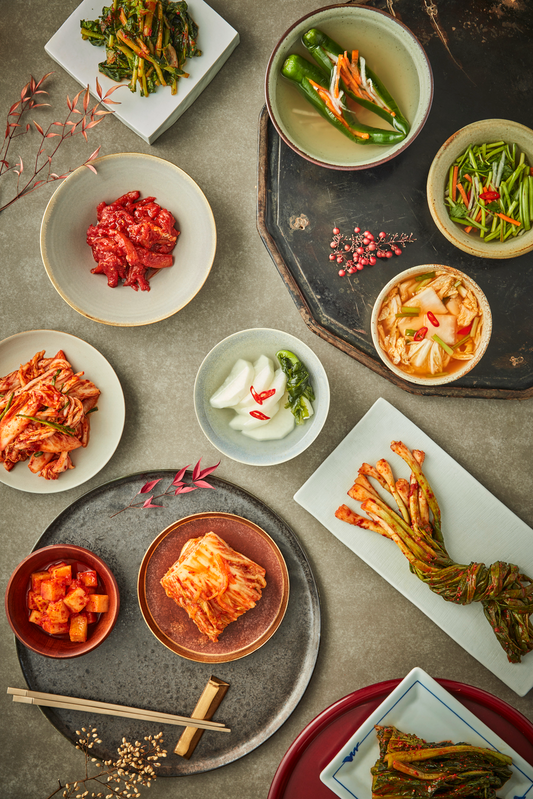Do All Koreans Eat Kimchi? Patterns of Kimchi Consumption and Its Growing Global Popularity

Kimchi, a traditional Korean dish, has been a big part of Korean food for thousands of years. It comes in over 200 types, like baechu kimchi made from napa cabbage. But, not all Koreans eat kimchi every day. This article looks into who eats kimchi in Korea and how it's becoming more popular worldwide.
In the last 40 years, kimchi has changed a lot. It went from being unknown to a health food loved around the world. Korea's growing economy helped kimchi get noticed globally. But, making kimchi modern and global has caused problems, like arguments with China and Japan.
Even though kimchi is loved worldwide, its popularity in South Korea has dropped since 1998. This makes us wonder if younger people or those in certain areas eat more kimchi. As kimchi is sold more abroad and found in stores and restaurants, we need to keep its cultural value alive.
Key Takeaways
- Kimchi is a traditional Korean fermented vegetable dish with over 200 variations, consumed daily by many Koreans.
- In the past 40 years, kimchi has transformed from being relatively unknown to a globally renowned health food.
- Korea's economic strength has contributed to the international recognition of kimchi as a Korean dish.
- Modernization and globalization of kimchi have led to challenges regarding its originality and history.
- Despite global popularity, domestic kimchi consumption in South Korea has been declining since 1998.

Kimchi in Everyday Life in Korea
Kimchi is a big part of Korean daily life. It has been a key part of Korean food for centuries. With over 200 types, kimchi suits many tastes and diets, making it a great side dish for every meal.
Baechu kimchi, made from napa cabbage, is the most popular, making up over 70% of kimchi sold. Korean white radish-based kimchi, like kkakdugi, makes up about 20%.
Kimchi is more than just food in Korea. The annual kimchi-making event, Kimjang, is a big holiday. It's as important as Chuseok and Seollal. Since 2013, it's been recognized by UNESCO as a cultural heritage.
During Kimjang, families and communities come together. They make lots of kimchi for winter. Each family has its own special recipe, passed down through generations.
"Kimchi is not just a dish; it's a way of life for Koreans. It connects us to our past, strengthens our bonds with family and friends, and nourishes our bodies and souls." - Park Min-soo, a kimchi enthusiast from Seoul.
Koreans love kimchi and eat it every day. The making of kimchi involves brining, seasoning, and fermentation. This creates a unique flavor that gets better with time.
There are many kimchi dishes, like dongchimi and green onion kimchi. These show the creativity and variety in Korean food.
Kimchi is also good for you. It's full of probiotics and vitamins A and C. As Koreans keep enjoying kimchi, it remains a symbol of their culture and culinary tradition.

Do All Koreans Eat Kimchi?
Kimchi is a big part of Korean food and culture. Yet, not all Koreans eat it every day. In recent years, how much kimchi people eat has changed, especially in cities like Seoul and Busan.
South Korea eats over 2 million tons of kimchi each year. This shows how important it is in their diet. But, in 2022, the country bought $169.4 million worth of kimchi from other countries. This is a 20.4% increase from the year before.
"I grew up eating kimchi every day, but now that I live in the city, I find myself reaching for it less often. It's not that I dislike kimchi, but my lifestyle and taste preferences have changed over time." - Park Min-soo, a 32-year-old office worker in Seoul.
Some Koreans don't like kimchi or eat it less. This is more common among young people in cities. But, in rural areas, kimchi is still very popular. Some people even pay more for kimchi from local farmers or online stores.
Kimchi is still loved and important in Korean cuisine. But, how much people eat it is changing, especially among young city dwellers. Yet, kimchi's cultural value means it will always be a key part of Korean meals.

Prejudices Foreigners Have About Kimchi
Kimchi is becoming more popular worldwide, but some people still have misconceptions about it. These ideas often come from not knowing much about kimchi. This includes its strong smell, spicy taste, fermented nature, and unique look.
The strong smell of kimchi
Many foreigners find kimchi's smell too strong. The smell comes from the fermentation process. It's a natural part of kimchi's flavor and health benefits.
Fear of spiciness
Some people worry that kimchi is too spicy. They think all Korean food is very hot. But, there are mild kimchi types like white kimchi and water kimchi for those who prefer less heat.
Aversion to fermented foods
Not everyone is comfortable with fermented foods, which can make them hesitant to try kimchi. But, kimchi is good for your health. It helps with digestion and boosts your immune system because of its probiotics.
Preconceived notions about kimchi's appearance
The look of kimchi can also cause misunderstandings. Its bright red color and visible veggies might seem strange. But, the colorful appearance shows the variety of ingredients and flavors in kimchi.
These prejudices often come from not knowing much about kimchi. As more people try it and learn about its history and culture, these ideas will fade. This will help more people enjoy and appreciate kimchi.
Stories that Break Stereotypes
Many foreigners who try kimchi for the first time are surprised by its unique taste. They end up enjoying it, which helps break down stereotypes about this Korean dish.
Kimchi festivals in cities like New York, London, and Sydney are growing in popularity. These events let people try different kimchi types, learn about fermentation, and even make their own. The success of these festivals shows kimchi is winning fans worldwide.
Examples of foreigners trying kimchi for the first time and growing to like it
"I was hesitant to try kimchi at first because of its strong smell and spicy reputation, but I'm so glad I gave it a chance. The complex flavors and texture won me over, and now I'm hooked!" - Sarah, American tourist visiting Seoul
Sarah's story is common. Many foreigners who try kimchi are surprised by its flavor and texture. Their positive experiences help encourage others to try it.

Kimchi festivals and its popularity around the world
Kimchi festivals in cities worldwide show its growing popularity. These events let people explore different kimchi types and recipes. They bring together kimchi lovers and curious foodies, spreading appreciation for kimchi and Korean culture.
Introduction of various dishes using kimchi by chefs
Chefs worldwide are using kimchi in many dishes, from Korean stews to fusion tacos. They show kimchi's versatility, introducing it to new audiences through creative recipes. This helps expand kimchi's appeal globally.
"As a chef, I love working with kimchi because it adds a bold, umami-rich dimension to any dish. Whether I'm using it as a condiment, a main ingredient, or a marinade, kimchi always brings an exciting depth of flavor to the table." - Chef Michael Kim, owner of a popular Korean-fusion restaurant in New York City
Chefs like Michael Kim are key in breaking stereotypes and introducing kimchi to new diners. Their creativity and passion help make kimchi a staple in global cuisine.

Kimchi Consumption in Korea
Kimchi is a big part of Korean food, but its popularity is changing. In cities like Seoul and Busan, people eat less kimchi now. This is because of fast industrial growth and new food choices.
In rural Korea, kimchi is still a big deal. Many families make their own kimchi the old way. But in cities, younger people prefer different foods. They like trying new things from around the world.
Kimchi Consumption Status in Korea
Even though less kimchi is eaten now, it's still very important in Korea. In 2023, South Korea sent 44,041 tons of kimchi abroad. This is a 7.1% increase from the year before. It shows that kimchi is still in demand, even if it's not as popular at home.
Consumption patterns of kimchi across different age groups and regions
Kimchi eating habits change with age and where you live. Kids and teens in rural areas like kimchi more than others. This shows that getting used to kimchi young can shape your taste later on.
Are there Koreans who dislike kimchi?
It's rare, but some Koreans don't like kimchi. Taste and the strong smell of kimchi can be off-putting. But most Koreans love kimchi and see it as a key part of their food culture.
Kimchi's popularity is growing worldwide, and this will likely change how Koreans eat it. New kimchi flavors and health benefits might attract more fans. This could make kimchi even more popular in Korea and beyond.

Globalization of Kimchi
Kimchi's popularity has grown worldwide, leading to a big increase in its exports. South Korea now sends kimchi to over 100 countries. In 2021, kimchi exports from Korea jumped by 9.6%, reaching $160 million.
The United States, Japan, Hong Kong, Taiwan, and the United Kingdom are big buyers. This shows kimchi is loved in many places.
Increase in Kimchi Exports and Popularity Overseas
Kimchi is becoming more popular in North America and Europe. It's seen as a healthy and vegan choice. Kimchi Day, celebrated on November 22, is now recognized in several U.S. states and even by the federal government.
Other countries like the Royal Borough of Kingston in London, Sao Paulo in Brazil, and Argentina also celebrate Kimchi Day. Hawaii even has a Kimchi Museum. This shows kimchi is loved worldwide.
The presence of kimchi in international supermarkets and restaurants
Kimchi is now found in supermarkets and grocery stores globally. It's also being used in restaurants, both as a traditional dish and in new recipes. This is making kimchi a big part of the world's food scene.
With its health benefits and rich taste, kimchi is a hit globally. It's loved for its flavor and good for your health. Kimchi is making a big impact worldwide.
FAQ
Is kimchi consumed daily in Korea?
Yes, Koreans eat kimchi every day. It's a big part of their food culture. It shows their way of life through history and philosophy.
How many variations of kimchi are there in Korea?
Korea has over 200 kinds of kimchi. Baechu kimchi from napa cabbage is the most famous. Other types include kkakdugi kimchi from radish, and chonggak kimchi from ponytail radish.
There's also green onion kimchi, mustard leaf kimchi, and cucumber kimchi. Plus, watery kimchi like dongchimi.
Is kimchi consumption increasing or decreasing in Korea?
Kimchi is still a big part of Korean life, but eating it has gone down. This is especially true in cities like Seoul and Busan.
Fast industrialization and new food choices are reasons. But in rural areas, kimchi is still a staple.
What are some common prejudices foreigners have about kimchi?
Some people think kimchi smells too strong or is too spicy. They might not like fermented foods or the way it looks.
Do foreigners enjoy kimchi when they try it for the first time?
Yes, many foreigners like kimchi after trying it. Kimchi festivals around the world show its growing popularity. Chefs are making new dishes with kimchi, making it more appealing worldwide.
Are there Koreans who dislike kimchi?
While rare, some Koreans don't like kimchi. It's because of personal taste.
Is kimchi gaining popularity globally?
Yes, kimchi is becoming more popular worldwide. Its exports have gone up a lot. You can find kimchi in many international stores.
Foreign restaurants are adding kimchi to their menus. It's seen as a healthy food with probiotics.








